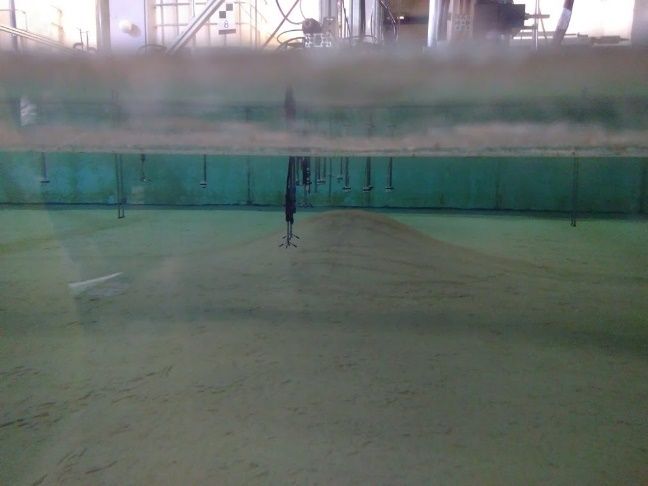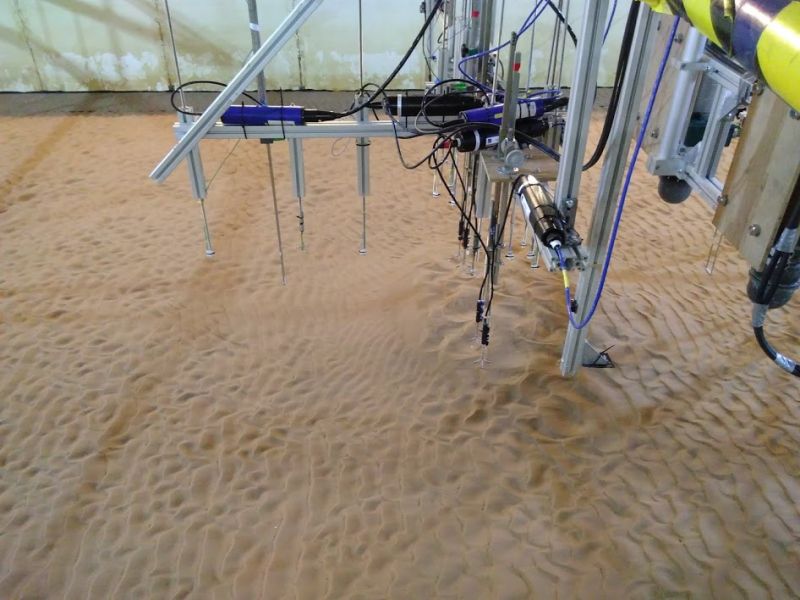I. Saxoni1, J.A. Hopkins1, M.A. de Schipper1,3, M.E. Wengrove2
1Delft University of Technology, This email address is being protected from spambots. You need JavaScript enabled to view it., This email address is being protected from spambots. You need JavaScript enabled to view it., This email address is being protected from spambots. You need JavaScript enabled to view it.
2OSU, This email address is being protected from spambots. You need JavaScript enabled to view it.
3Shore Monitoring & Research
Rising sea levels, and changes in storm patterns owing to climate change threaten coastal areas with erosion. A variety of protective measures exist to stall erosion, among which nourishments are ever gaining popularity. However, despite the wide application of nourishments, the hydrodynamics around nourishments are not fully understood. To achieve a better understanding of sediment movement at the vicinity of nourishments, MODEX (MOrphological Diffusivity EXperiment) was conducted in May/June 2018 (Figure 1) with the aim to establish a link between the imposed hydrodynamic forcing and observed morphodynamic response of a sandy mound in shallow water.


Figure 1: Left: The tested sand mound. Right: Impression of the mound after an experiment.
Here, observations from nine tests of hydrodynamic conditions on the sandy mound of (water column) velocities and bathymetry data are presented, to show the relationship between mound diffusion and incident wave, current, and combined wave-current conditions. The chosen aspect to express the hydrodynamics is flow energy, as it allows the comparison between the different conditions. In particular, a measure of the energy of the flow related to the maximum occurring velocity is used,  .
.
The observations show a linear relationship between mound height reduction rate and flow energy, irrespective of whether the energy is owing to waves or currents. The same holds for the migration rate of both the mound footprint and peak. An inverse linear relation is found between post-experimental mound footprint shape (length/width ratio) and flow energy. Regarding footprint area changes, no uniform relation can be established for all the hydrodynamic conditions. The observations seem to follow a parabolic rule with flow energy under waves, while a linear relationship is apparent under current, and combined conditions. Finally, within the flow type subgroups the cases may comply fully to the general (linear) relationship or show different behaviour locally (cluster or spread).
The established relationships show that a mound is expected to lower more quickly and move downstream further with increasing flow energy, regardless of the kind of conditions that it is imposed to. All those measures of morphological change scale with the flow velocities in the water column. However, the spreading of the mound (in terms of footprint area) follows different relationships depending on the hydrodynamic conditions, as is shown from the two occurring relations. All the above refer exclusively to the flume scale and the experimental conditions. Possible implications for field scale nourishments will be discussed.










